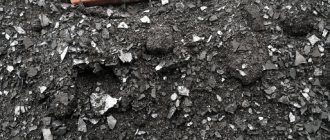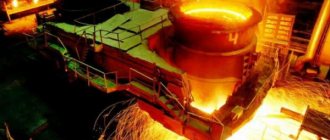General information:
| 100 | General information | |
| 101 | Name | Zinc |
| 102 | Former name | |
| 103 | Latin name | Zincum |
| 104 | English name | Zinc |
| 105 | Symbol | Zn |
| 106 | Atomic number (number in table) | 30 |
| 107 | Type | Metal |
| 108 | Group | Amphoteric, transition, non-ferrous metal |
| 109 | Open | Known since ancient times |
| 110 | Opening year | before 1000 BC |
| 111 | Appearance, etc. | Brittle bluish-white metal |
| 112 | Origin | Natural material |
| 113 | Modifications | |
| 114 | Allotropic modifications | |
| 115 | Temperature and other conditions for the transition of allotropic modifications into each other | |
| 116 | Bose-Einstein condensate | |
| 117 | 2D materials | |
| 118 | Content in the atmosphere and air (by mass) | 0 % |
| 119 | Content in the earth's crust (by mass) | 0,0078 % |
| 120 | Content in seas and oceans (by mass) | 5,0·10-7 % |
| 121 | Content in the Universe and space (by mass) | 0,00003 % |
| 122 | Abundance in the Sun (by mass) | 0,0002 % |
| 123 | Content in meteorites (by mass) | 0,018 % |
| 124 | Content in the human body (by weight) | 0,0033 % |
Zinc (Zn, Zincum)
History of zinc
Zinc in its pure form was first isolated by William Champion in 1738, although brass (an alloy of copper and zinc) was used in Ancient Egypt and Ancient Greece (calorizator).
Sometimes the discoverer of zinc is the German S. Marggraf, who in 1746 developed a similar method for producing zinc and described it in more detail than Champion. Zinc owes its name to Paracelsus, in whose works the words zincum and zinken are found, which name the metal, apparently due to the similarity of its crystallites to needles (zinke - tooth).
General characteristics of zinc
Zinc is an element of the secondary subgroup II of group IV of the periodic table of chemical elements D.I. Mendeleev, has an atomic number of 30 and an atomic mass of 65.39. The accepted designation is Zn (from the Latin Zincum).
Being in nature
Zinc is a fairly common element; it is found in the earth’s crust, in almost all water resources of the World Ocean and in many living organisms. Today, more than 60 zinc minerals are known (sphalerite, zincite, calamine, etc.). Large zinc deposits have been discovered in Australia, Bolivia, Iran and Kazakhstan.
Physical and chemical properties
Zinc is a brittle, ductile transition metal, has a white-bluish color, and when exposed to air it becomes coated with a layer of zinc oxide, which leads to tarnishing. At high temperatures it burns, forming white zinc oxide.
Daily requirement for zinc
The body of a healthy adult should receive from 9 to 11 mg of zinc per day, children - a little less, from 2 to 8 mg, women during pregnancy and breastfeeding - from 11 to 13 mg.
Foods rich in zinc
The main suppliers of zinc are food, an important element for the functioning of the body is found in green leafy vegetables, broccoli, cauliflower and radishes, carrots and corn, green onions, beans, peas and lentils, avocados and berries, peanuts, coconut, walnuts and pine nuts , sesame, wheat, oatmeal and rice. Zinc is also present in products of animal origin - pork and lamb, beef and turkey, duck meat and beef tongue, seafood and fish, processed cheese and egg yolk.
Beneficial properties of zinc and its effect on the body
Functions and beneficial properties of zinc:
- participation in the formation of bone tissue,
- diabetes prevention,
- preventing the occurrence of epilepsy,
- ensuring rapid healing of wounds,
- promoting the absorption of vitamin A,
- improvement of hair condition,
- positive effect on a person’s mental abilities,
- prevention of arthritis and rheumatism.
Interaction with others
Zinc is necessary for the metabolism of vitamin E; vitamin A only works in the presence of zinc. Vitamin C and zinc are a good remedy against catarrh and many viral diseases.
Signs of zinc deficiency
A lack of zinc in the human body is characterized by the following symptoms:
- disorders of the gastrointestinal tract,
- brittleness of nails and the appearance of white spots on them,
- exhaustion and hair loss,
- loss of sense of taste and appetite,
- non-healing of small wounds,
- nervousness, fatigue,
- memory loss.
Signs of excess zinc
Excessive zinc content in the human body is usually caused by taking dietary supplements and zinc preparations, and is characterized by headaches, attacks of weakness and nausea.
Uses of zinc in life
Zinc in its pure form is used as a reducer of precious metals, as a protection for steel against corrosion, for the production of batteries, in the printing industry, in medicine, in the production of various alloys, rubber tires and oil paints.
Author: Victoria N. (especially for) Copying this article in whole or in part is prohibited.
Properties of the zinc atom:
| 200 | Properties of the atom | |
| 201 | Atomic mass ( molar mass ) | 65.38(2) amu (g/mol) |
| 202 | Electronic configuration | 1s2 2s2 2p6 3s2 3p6 3d10 4s2 |
| 203 | Electronic shell | K2 L8 M18 N2 O0 P0 Q0 R0 |
| 204 | Atomic radius (calculated) | 142 pm |
| 205 | Empirical atomic radius* | 135 pm |
| 206 | Covalent radius* | 122 pm |
| 207 | Ion radius (crystalline) | Zn2+ 74 (4) pm, 88 (6) pm, 104 (8) pm (in parentheses the coordination number is indicated - a characteristic that determines the number of nearest particles (ions or atoms) in a molecule or crystal) |
| 208 | Van der Waals radius | 139 pm |
| 209 | Electrons, Protons, Neutrons | 30 electrons, 30 protons, 35 neutrons |
| 210 | Family (block) | d-family element |
| 211 | Period in the periodic table | 4 |
| 212 | Group on the periodic table | 12th group (according to the old classification - a secondary subgroup of the 2nd group) |
| 213 | Emission spectrum |
Zinc deposits
Deposits of zinc ore are found in almost all countries. Active zinc mining is carried out in 50 of them. The leading positions in field development are occupied by: China, Australia, Peru, Europe and Canada. The ore contains zinc together with other metals. Copper, gold and silver impurities are found. The largest deposits of sphalerite (ZnS). It is found in 98% of ores that are mined today. Zinc ores occur quite close to the earth's surface, most often oxides and carbonates. Geologically proven reserves of zinc on our planet reach approximately 1900 million tons, reserves (found and available for development) - almost 250 million tons. The largest deposits of zinc ore are located in Australia. There they occupy more than 22% of the total. About 17% is located in China.
In our country, zinc deposits reach 62 million tons, or slightly more than 3% of the world reserve. Approximately 80% of zinc deposits are located underground, 8% are on the surface, and another 12% are combined. But, in terms of production volumes:
- 15% is mined in quarries
- in underground mines 64%
- combined reserves give 21%.
Chemical properties of zinc:
| 300 | Chemical properties | |
| 301 | Oxidation states | -2, 0, +1, +2 |
| 302 | Valence | II |
| 303 | Electronegativity | 1.65 (Pauling scale) |
| 304 | Ionization energy (first electron) | 906.4 kJ/mol (9.394197(6) eV) |
| 305 | Electrode potential | Zn2+ + 2e— → Zn, Eo = -0.763 V |
| 306 | Electron affinity energy of an atom | -58(20) kJ/mol (-0.6(2) eV) – presumably |
Zinc production
Metal mining
Zinc as a native metal does not occur in nature. It is mined from polymetallic ores containing 1–4% metal in the form of sulfide, as well as copper, lead, gold, silver, bismuth and cadmium. The ores are enriched by selective flotation and zinc concentrates (50–60% Zn) are obtained.
Zinc concentrates are fired in furnaces. Zinc sulfide is converted to ZnO oxide. This releases sulfur dioxide SO2, which is used in the production of sulfuric acid.
Metal production
There are two ways to obtain pure zinc from ZnO oxide.
The most ancient method is distillation. The fired concentrated composition is subjected to heat treatment to give it granularity and gas permeability.
The concentrate is then reduced with coke or coal at a temperature of 1200–1300 °C. The process produces metal vapors, which are condensed and poured into molds. The liquid metal is separated from iron and lead at a temperature of 500 °C. This achieves zinc with a purity of 98.7%.
Sometimes complex and expensive processing of zinc by rectification is used - separation of mixtures due to the exchange of heat between steam and liquid. This cleaning allows you to obtain metal with a purity of 99.995% and remove cadmium.
The second method of producing zinc is electrolytic. The calcined concentrate is treated with sulfuric acid. The finished sulfate solution is cleaned of impurities, after which it is subjected to electrolysis in lead baths. Zinc deposits on aluminum cathodes. The resulting metal is removed from the baths and melted in induction furnaces. After this, electrolytic zinc with a purity of 99.95% is obtained.
Metal casting
Hot zinc is a liquid and flowing metal. Thanks to these properties, it is easily filled into molds.
Impurities affect the amount of surface tension of the zinc. The technological properties of the metal can be improved by adding small amounts of lithium, magnesium, tin, calcium, lead or bismuth.
The higher the overheating temperature of zinc, the better it fills molds. When casting metal into cast iron molds, its volume decreases by 1.6%. This makes it difficult to produce large and long zinc castings.
Physical properties of zinc:
| 400 | Physical properties | |
| 401 | Density* | 7.14 g/cm3 (at 20 °C and other standard conditions, state of matter – solid), 6.57 g/cm3 (at a melting point of 419.53 °C and other standard conditions, the state of matter is liquid), 6.4 g/cm3 (at 800 °C and other standard conditions , state of matter – liquid) |
| 402 | Melting temperature* | 419.53 °C (692.68 K, 787.15 °F) |
| 403 | Boiling temperature* | 907 °C (1180 K, 1665 °F) |
| 404 | Sublimation temperature | |
| 405 | Decomposition temperature | |
| 406 | Self-ignition temperature of a gas-air mixture | |
| 407 | Specific heat of fusion (enthalpy of fusion ΔHpl)* | 7.32 kJ/mol |
| 408 | Specific heat of evaporation (enthalpy of boiling ΔHboiling)* | 115 kJ/mol |
| 409 | Specific heat capacity at constant pressure | |
| 410 | Molar heat capacity* | 25.47 J/(K mol) |
| 411 | Molar volume | 9.16092 cm³/mol |
| 412 | Thermal conductivity | 116 W/(mK) (at standard conditions), 116 W/(mK) (at 300 K) |
| 413 | Thermal expansion coefficient | 30.2 µm/(MK) (at 25 °C) |
| 414 | Thermal diffusivity coefficient | |
| 415 | Critical temperature | |
| 416 | Critical pressure | |
| 417 | Critical Density | |
| 418 | Triple point | |
| 419 | Vapor pressure (mmHg) | |
| 420 | Vapor pressure (Pa) | |
| 421 | Standard enthalpy of formation ΔH | |
| 422 | Standard Gibbs energy of formation ΔG | |
| 423 | Standard entropy of matter S | |
| 424 | Standard molar heat capacity Cp | |
| 425 | Enthalpy of dissociation ΔHdiss | |
| 426 | The dielectric constant | |
| 427 | Magnetic type | |
| 428 | Curie point | |
| 429 | Volume magnetic susceptibility | |
| 430 | Specific magnetic susceptibility | |
| 431 | Molar magnetic susceptibility | |
| 432 | Electric type | |
| 433 | Electrical conductivity in the solid phase | |
| 434 | Electrical resistivity | |
| 435 | Superconductivity at temperature | |
| 436 | Critical magnetic field of superconductivity destruction | |
| 437 | Prohibited area | |
| 438 | Charge carrier concentration | |
| 439 | Mohs hardness | |
| 440 | Brinell hardness | |
| 441 | Vickers hardness | |
| 442 | Sound speed | |
| 443 | Surface tension | |
| 444 | Dynamic viscosity of gases and liquids | |
| 445 | Explosive concentrations of gas-air mixture, % volume | |
| 446 | Explosive concentrations of a mixture of gas and oxygen, % volume | |
| 446 | Ultimate tensile strength | |
| 447 | Yield strength | |
| 448 | Elongation limit | |
| 449 | Young's modulus | |
| 450 | Shear modulus | |
| 451 | Bulk modulus of elasticity | |
| 452 | Poisson's ratio | |
| 453 | Refractive index |
Zinc is a chemical element. Areas of use
- Zinc is actively used in the mining and extraction of precious metals (gold, silver) from enriched rocks. For example, if precious metals are mined by underground leaching, zinc metal is used as a reducing agent.
- In mechanical engineering, various methods of zinc coating are used to protect metal products from corrosion destruction.
- In the production of accumulators and batteries, zinc is used as a material for the negatively charged electrode. Zinc-air batteries have the highest specific energy capacity.
- In printing, printing plates made of zinc are used.
- Paint production – zinc white (zinc oxide).
- Zinc compounds are used in the production of semiconductors.
- Zinc sulfide is used to make the luminescent composition.
- In instrument making, zinc is specially introduced into some types of hard solders in order to reduce the melting point.
- Fiber production - zinc chloride is added to the flux for soldering metals and various components.
- The application area of zinc-copper alloy – brass – is wide. Most often, this alloy is used in mechanical engineering in the production of critical parts (precision casting).
- Zinc compounds are used in the manufacture of automobile rubber tires.
- In optics, zinc is used in the manufacture of special optical glasses that have a low absorption coefficient (in the mid-infrared spectral range).
- Medicine. Zinc. Zinc oxide is used to produce antiseptics and anti-inflammatory drugs.
- Rodent poison also uses zinc compounds (zinc phosphide).
Zinc crystal lattice:
| 500 | Crystal cell | |
| 511 | Crystal grid #1 | |
| 512 | Lattice structure | Hexagonal close-packed |
| 513 | Lattice parameters | a = 2.6648 Å, c = 4.9468 Å |
| 514 | c/a ratio | 1,856 |
| 515 | Debye temperature | 234K |
| 516 | Name of space symmetry group | P63/mmc |
| 517 | Symmetry space group number | 194 |
Story
In the ancient world they knew brass (copper-zinc alloy). The Englishman William Champion managed to obtain zinc as a metal by the 18th century. He founded the first plant. Later, his compatriots developed a method of rolling metal.
However, the pioneer in history was the German Andreas Marggraff. He worked out a similar method, describing the technology in detail.
In Russia, a trial batch of zinc was received by 1905.
Ten years later, zinc was mined electrolytically in North America.
The terms zincum, zinken were first used by the chemist and physician of the Middle Ages Paracelsus. It is similar to the German word for "prong". This is what zinc metal fragments look like.
Warning
Uncontrolled entry of metal into the body causes poisoning. It is generated by sulfates or chlorides. They can form when storing food in galvanized containers.
Symptoms of zinc vapor poisoning:
- Intense thirst.
- Sweetish taste in the mouth.
- Loss or decrease in appetite.
- Dry cough.
The person feels overwhelmed and tired. Feels drowsy, chest pain.
For severe poisoning, 1 gram of zinc sulfate is sufficient.
You need to remove toxins immediately. Their presence provokes anemia, growth inhibition, and infertility.
Industrial uses of zinc
4 main uses of this metal in industry:
- Production of paints. The substance is used to create oil-based paints.
- Mechanical engineering. Without zinc, many types of rubber cannot be created.
- Pharmaceuticals. Some drugs and vitamins use small amounts of zinc - it is beneficial for human health.
- Corrosion protection. The use of cold and hot galvanizing does not allow the metal to come into contact with the environment, strong humidity and other threats. This prevents corrosion and increases the duration of use.
Zinc customers are manufacturers of various types of batteries, companies involved in the restoration of precious metals and printing.
Return to articles Share article
Hydrometallurgical methods for obtaining zinc
Currently, much attention is paid to a more complete use of the components of zinc-containing raw materials, the introduction of dump-free technology, and the production of high-grade zinc. To solve these problems in the production of zinc, a hydrometallurgical method is used for processing zinc concentrates according to a technological scheme.
The hydrometallurgical method is based on the leaching of zinc oxide with dilute sulfuric acid from a pre-burnt concentrate (cinder):
ZnO + H2SO4 = ZnSO4 + H2O
Zinc is separated from solution by electrolytic reduction at the cathode. At this time, sulfuric acid is regenerated at the anode, which makes it possible to use the spent electrolyte as a solvent when leaching cinder.
Since many accompanying impurity elements (copper, cadmium, nickel, cobalt and others) pass into the solution during leaching, the solution is thoroughly cleaned before electrolysis. The purer the solution supplied for electrolysis, the higher quality commercial zinc is obtained.
During electrolysis the following reaction occurs:
ZnSO4 + H2O = Zn + H2SO4 + 0.5O2
Despite the multi-stage nature, the hydrometallurgical method has many advantages: high complexity of the use of raw materials, production of high-grade zinc that does not require refining, high overall recovery of zinc and other valuable components into the corresponding products, elimination or significant reduction in coke consumption. In world practice, up to 85% of zinc-containing raw materials are currently processed using this method.







